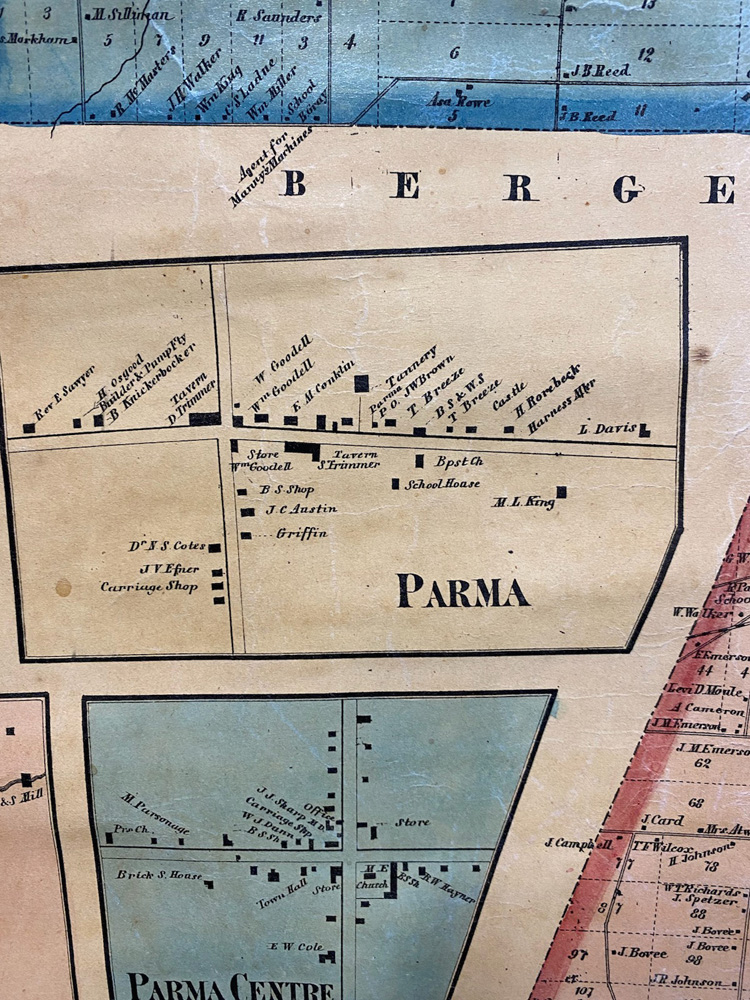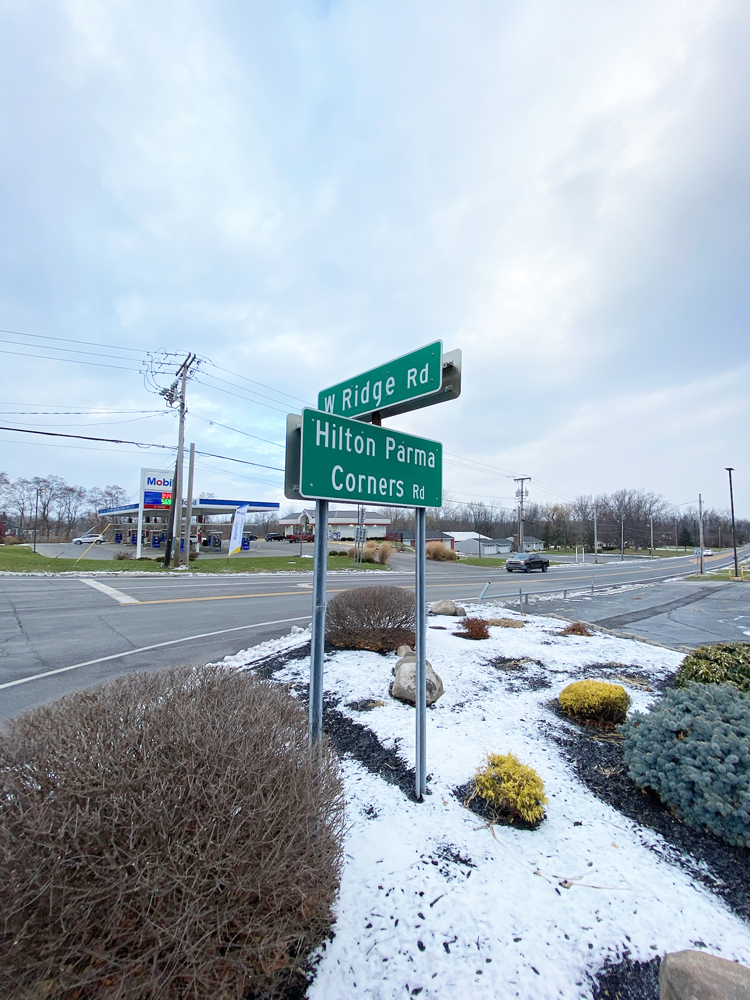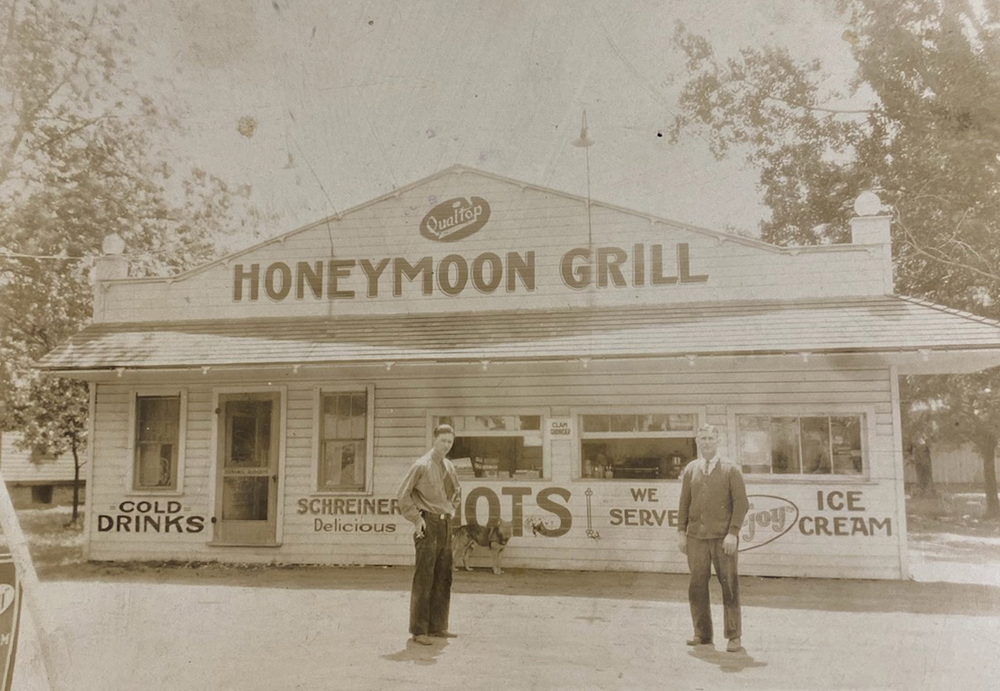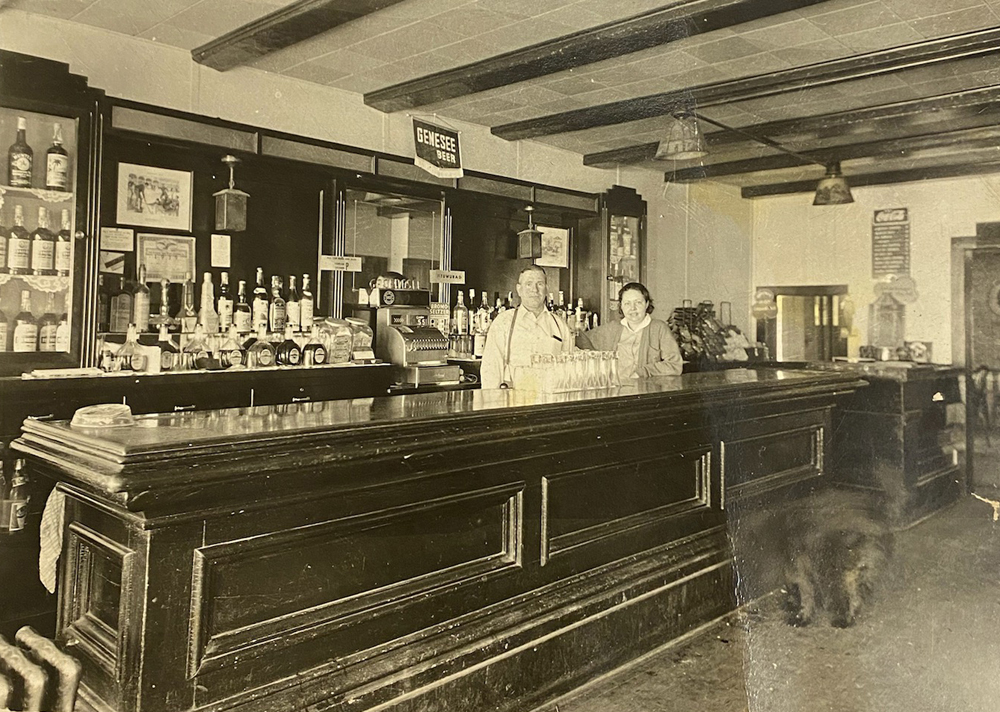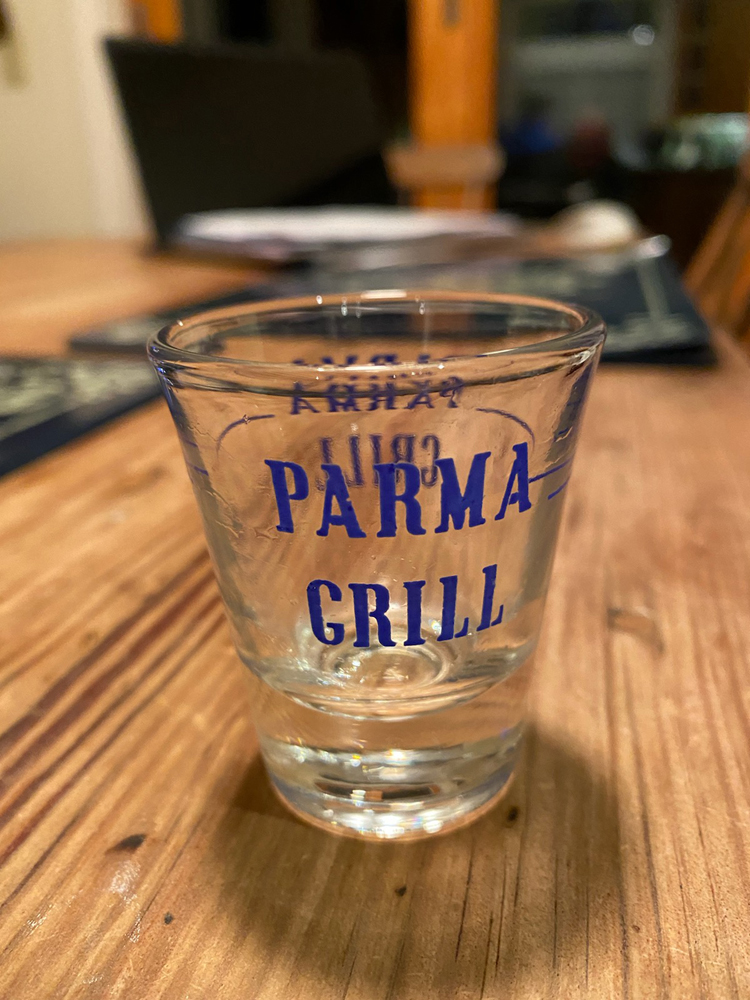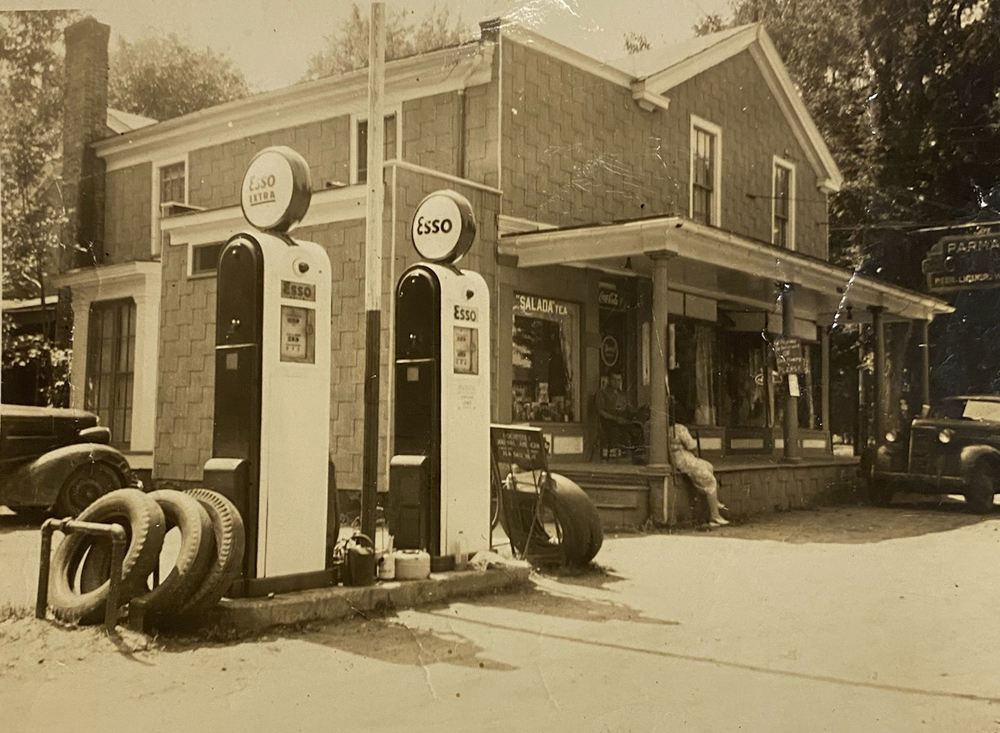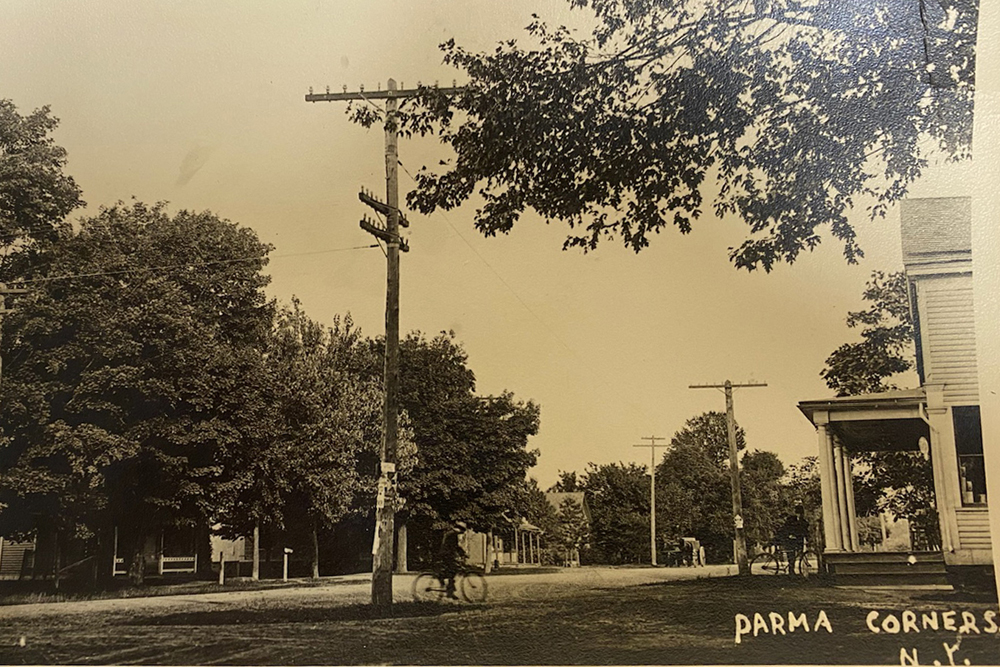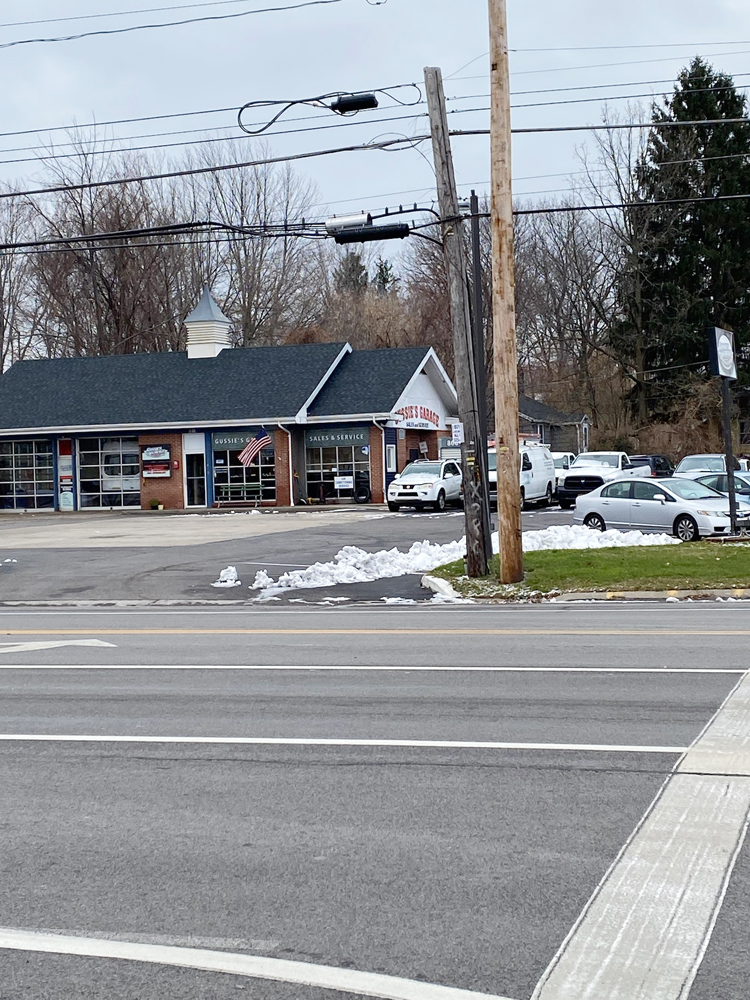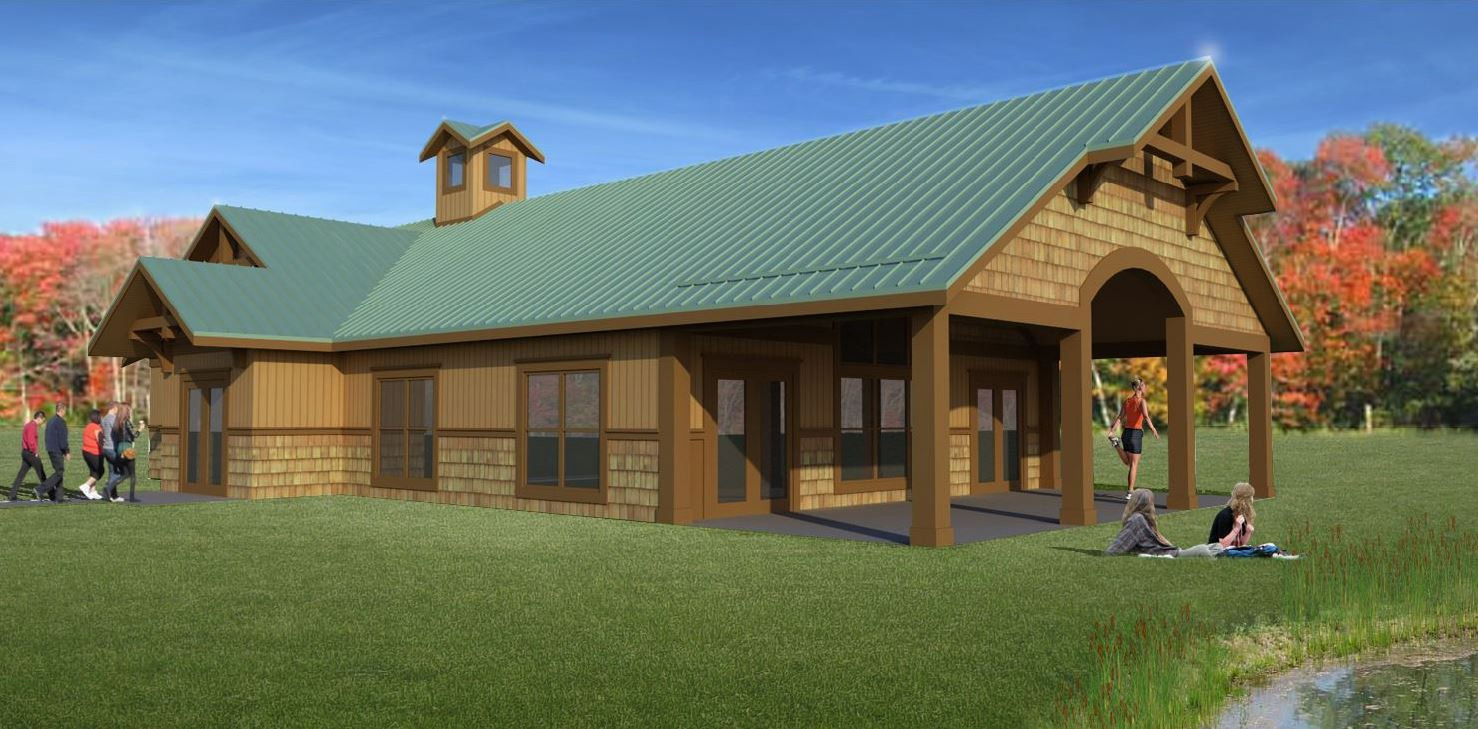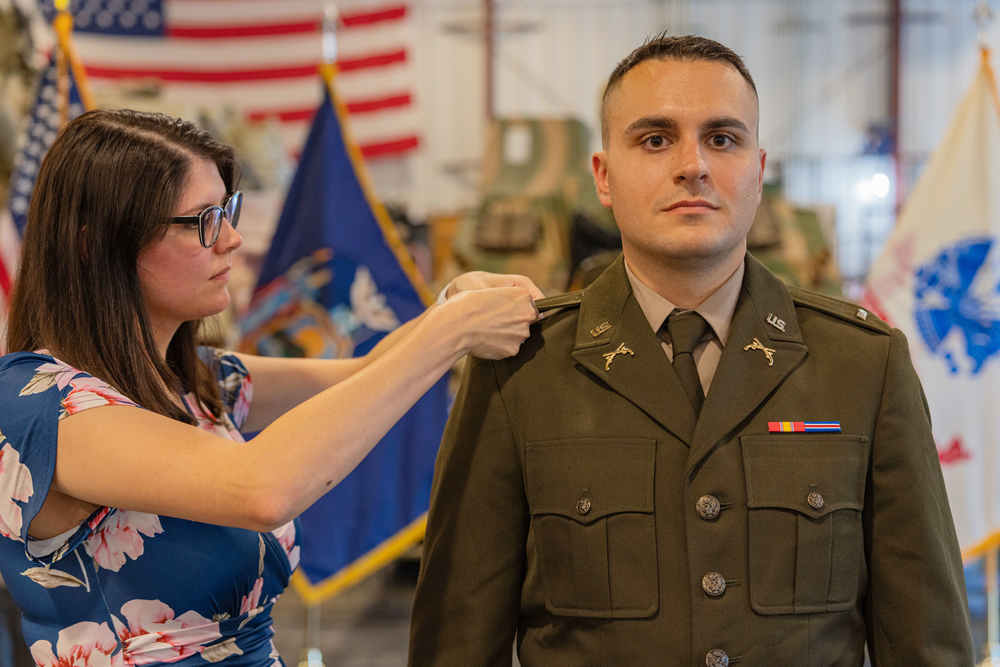The History of Parma Corners Part 1
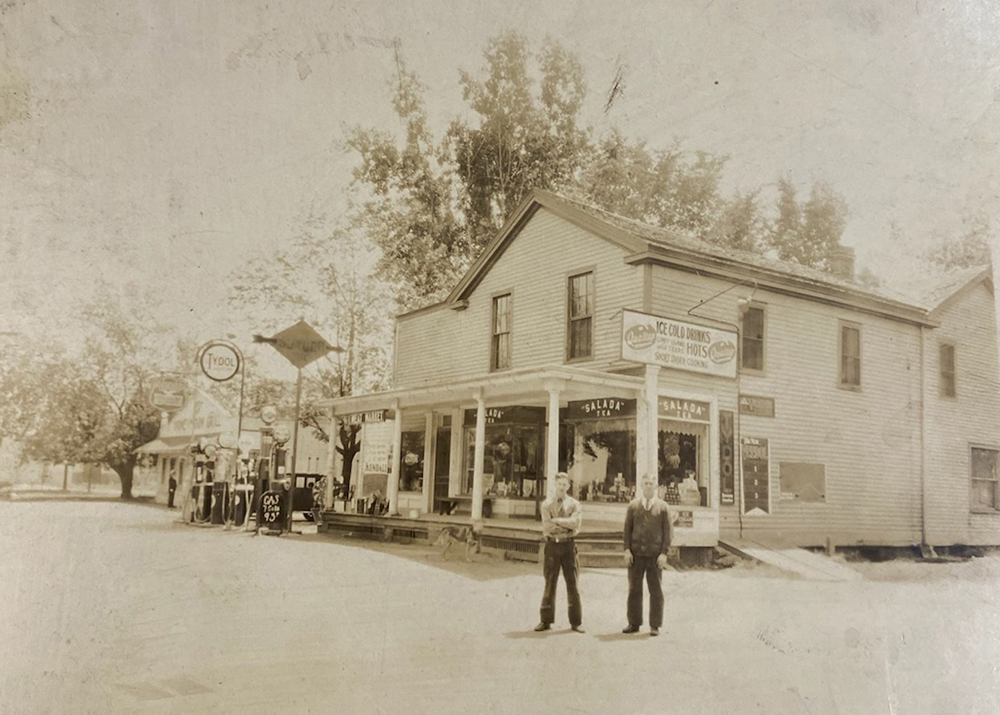
by David Crumb, Parma-Hilton Historian
Situated at the intersection of Route 259 and Ridge Road is what remains of the old Parma community called Parma Corners. It was the first commercial settlement of note in Parma. Just east of Parma Corners at the intersection of Manitou Road and Ridge Road is another old community once called West Greece (half of which is in the Town of Parma). All along the Ridge on both sides going west were homes, churches, small businesses, large farms, and even a lyceum and an academy which embraced a close-knit community of a progressive and hard-working class of citizens who mostly arrived from eastern New York or New England.
History tells us that brothers Hope and Elisha Davis were the first settlers in 1805. They built a hotel and tavern resembling a blockhouse on the southwest corner. Before Parma came into being, the area was called Northampton. Col. Josiah Fish lived at the Corners. He was the first supervisor of the much larger town of Northampton. In 1809, Northampton was divided into towns that included Greece and Parma. From 1809 to 1817, the Town of Parma included Ogden.
Parma Corners was considered the first stop for travelers going west from the Genesee River toward the Niagara River at Lewiston, New York. Several hotels, taverns, and other mercantile establishments were there to accommodate travelers. On the southeast corner stood an old stagecoach stop and general store. According to Erastus Turner in his 1877 History of Monroe County, it is stated: “that in 1812, J. Thompson built the first store on the northeast corner, which also served as the first post office until the Erie Canal opened in 1823.” Later, in 1816, a Mr. Bentley opened a tavern on the southeast corner, which changed hands quite often, later becoming known as the Goodell House. It was this coach stop where the noted Mason, William Morgan, of Batavia was last seen on that memorable journey to Lewiston from which he never returned. Morgan had threatened to disclose Masonic secrets after he had been unceremoniously dismissed from the Batavia Lodge in 1825. His disappearance caused a tremendous uproar and distrust of secret societies across the nation at that time. Secret Societies were viewed as a threat to free speech. The Parma Masonic Lodge, located further west on the Ridge and housed in the long-gone Trimmer Hotel, was soon after disbanded in 1829.
Anyone remember Bacon’s Grill and Tavern?
The Goodell House continued to change hands over the years until 1933, when it was purchased by William Bacon. At that time, it was Parma Corners’ old-fashioned general store. As more people acquired automobiles and the general store business withered, William Bacon wisely converted the old establishment into a tavern called the Parma Grill. He raised the old general store counter up a few inches higher, and it served nicely as the bar. It was in operation from the 1940s until it burned in 1967. William Bacon’s son, Arlo “Bus” Bacon, along with his wife, Dorothy, and daughter, Beverly, returned to Parma Corners in 1951 from New Jersey and took over the operation of the Parma Grill. It was a favorite stop-off for customers going east or west on the Ridge and north or south on Route 259. Arlo converted an earlier building nearby into the Honeymoon Grill. This was a favorite stop for newlyweds on their way to Niagara Falls over the Honeymoon Trail (a colloquial name given to Ridge Road in the mid-1900s). There were also two honeymoon suites for those wishing to start their honeymoon early.
Arlo was well-known in his day and was an avid ham radio operator. Hilton resident, Ed Gable, related that he knew Arlo and that he was a member of the Rochester Ham Radio Association, which was considered the largest in the United States at that time with 1,200 members. It was also noted that Arlo had an Army Navy transmitter in 1969. Ken Freeman, Curator of the Parma Hilton Museum, recently acquired a postcard sent by Bus to a ham radio enthusiast in Israel. It was dated 1959. Some local people still remember the Parma Grill. John Palmer recollected that his father once tended bar there. When visiting with John and his wife, Barbara, recently, Barbara reached into the cupboard and retrieved a Parma grill ashtray along with a Parma Grill shot glass. The Parma Grill is still in the collective local memory. Last month a donation to the Hilton Historian’s Office was a Lakeshore League Champions Women’s Bowling trophy sponsored by Parma Grill in 1959-60. Today all that remains of the Goodell House/Parma Grill is a two-foot section of a hand-hewn beam with a wooden peg. This was salvaged from the ruins of the building after it had burned in 1967 by Ray Witty and is displayed in the Parma Museum.
Photos from the Parma-Hilton Historian’s Office unless otherwise indicated.
To read History of Parma Corners Part 2 Click Here
To read History of Parma Corners Part 3 Click Here
